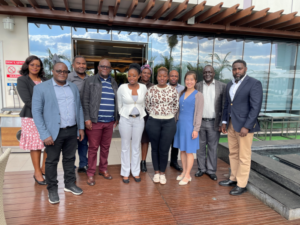Piloting the Integration Assessment Scorecard in LabCoP Countries

The recent Lancet Commission Report highlighted gaps in access to diagnostics, with only 47% having access globally. Integrated diagnostics, a LabCoP priority, may address this access gap.
A previous assessment of seven LabCoP countries in 2021 revealed that some countries had piloted integrated laboratory services and could be reference points for other countries. However, there was no standardised way to measure diagnostic integration’s success in improving access and health outcomes. A framework is thus necessary to guide countries in considering essential elements for successfully integrating testing services to improve access and health outcomes.
ASLM LabCoP, in collaboration with its partners, developed an integration assessment scorecard to help countries identify gaps in the critical components of diagnostic integration and develop solutions to improve clinical and public health outcomes. The scorecard is based on the capability maturation model and covers four core capabilities: preparation and planning, network capacity, support systems, and data use in decision-making. Under these are ten components, including policies and guidelines, governance and coordination, network capacity and configuration, workforce, reporting, and others. The scorecard scores from 0 to 5, assigning each component the lowest score for any two to three indicators within that component.

During the last quarter, the LabCoP piloted the scorecard in five LabCoP countries: Zambia, South Africa, Eswatini, Zimbabwe, and Tanzania. The exercise aimed to determine the scorecard’s ease of use and practicability. Each country’s ministry of health’s focal person convened a group of stakeholders who answered the questions by ASLM assessors. The stakeholders were mainly from the ministry of health laboratory directorate or equivalent, representatives from the public health department, civil societies, implementing partners, and others. The stakeholders appreciated the scorecard as a means of identifying areas of improvement for the successful integration of laboratory services. For example, a Zimbabwean stakeholder remarked that ‘the tool is an eye opener on the need to look at the integration of laboratory services from the perspective of the patient”. Another from South Africa said that much work has gone into developing this tool to cover all aspects of integration of laboratory services.
Following a successful pilot, the scorecard will be refined and used to analyse the landscape of diagnostic integration readiness of the 19 LabCoP countries. The gaps identified can then be fed into national work plans for funding requests. Countries can then translate the diagnostic integration needs into diagnostic network optimisation-use cases.
